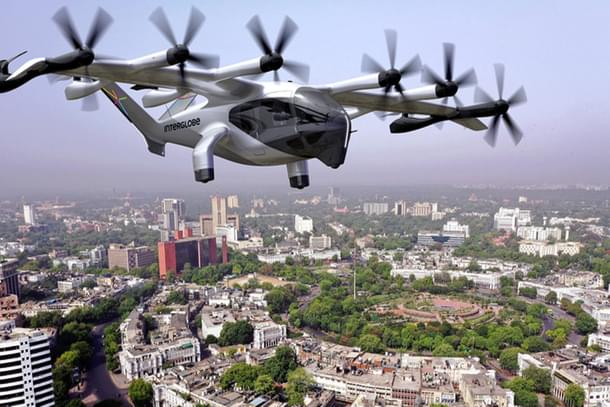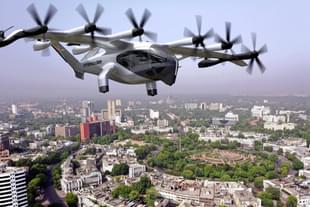News Brief
India Fast-Tracks Electric Air Taxi Plans With Five Sites Selected For Sandbox Development
Swarajya Staff
Feb 14, 2025, 11:56 AM | Updated 11:56 AM IST
Save & read from anywhere!
Bookmark stories for easy access on any device or the Swarajya app.


India has taken a significant step towards integrating Advanced Air Mobility (AAM) into its transport ecosystem by identifying five potential locations in Gujarat and Andhra Pradesh for controlled electric vertical take-off and landing (eVTOL) aircraft flights over the next 12 to 18 months.
The selected sites in Gujarat include a coastal airstrip at Mandvi (Kutch), Sabarmati Riverfront in Ahmedabad, and Amreli district, while in Andhra Pradesh, Kurnool and Puttaparthi Airport have been chosen.
These locations were identified following comprehensive field studies conducted in January 2025 by a joint team from the Ministry of Civil Aviation and the World Economic Forum’s Centre for the Fourth Industrial Revolution (C4IR) India.
Led by the Director of Civil Aviation, Mr. Shankhesh Mehta, the high-level delegation included representatives from the Directorate General of Civil Aviation (DGCA), the Airports Authority of India (AAI), and key industry stakeholders.
The word “aircraft” is typically associated with high-speed airplanes that transport people and cargo across cities and continents via airports. Simply put, it is a machine that derives support in the atmosphere through reactions in the air rather than on the Earth’s surface.
However, as technology advances, the world is witnessing new forms of aerial vehicles that can access hard-to-reach areas—where traditional airplanes cannot—more sustainably.
These vehicles range from small drones delivering sensors or medical supplies to remote areas to future air taxis designed to carry passengers for the last mile.
Electric vertical take-off and landing (eVTOL) and short take-off and landing (STOL) aircraft are fixed-wing aircraft that can take off and land on runways much shorter than those required by conventional aircraft.
They offer on-demand passenger and cargo transport within urban and regional areas. Through such vehicles, AAM holds the potential to decongest roads, improve accessibility, and create new economic opportunities.
The primary goal of these site visits was to identify potential locations for AAM sandbox sites, where controlled trials can be conducted over the next 12 to 18 months. In total, five locations have been selected so far, with more under consideration.
By establishing sandbox sites, India aims to create an ecosystem that enables the safe and efficient deployment of AAM, aligning with the country’s broader development objectives.





